Introduction
The Kuiper Belt, often referred to as the “debris disk” of our solar system, is a vast, enigmatic region located beyond the orbit of Neptune. It stretches from 30 to 50 astronomical units (AU). This is equivalent to 4.5 to 7.5 billion kilometers from the Sun. It makes it one of the most distant regions in our solar system. The discovery of the Kuiper Belt began in 1992. It was with the detection of the object 1992 QB1 by astronomers David Jewitt and Jane Luu. This confirmed a long-held hypothesis about a population of icy bodies beyond Neptune. For example, Pluto, which was once considered the ninth planet, resides within this belt. It underscores its significance in planetary science. Consequently, this region serves as a remnant of the solar system’s formation. It offers clues to its early history.
Moreover, the Kuiper Belt contains thousands of objects. They range from small ice chunks to large bodies over 1,000 kilometers in diameter. These include dwarf planets. Its total mass is estimated at just 1% of Earth’s. This is significantly lower than earlier predictions. This results from gravitational disruptions over billions of years. However, its immense distance poses a challenge for detailed study. Advanced technology and missions are required for this task. As of 2025, spacecraft like New Horizons have provided insights. They are groundbreaking and reveal the Kuiper Belt’s complexity. Thus, this article delves into its formation and composition. It also covers notable objects, exploration history, and cosmic importance.
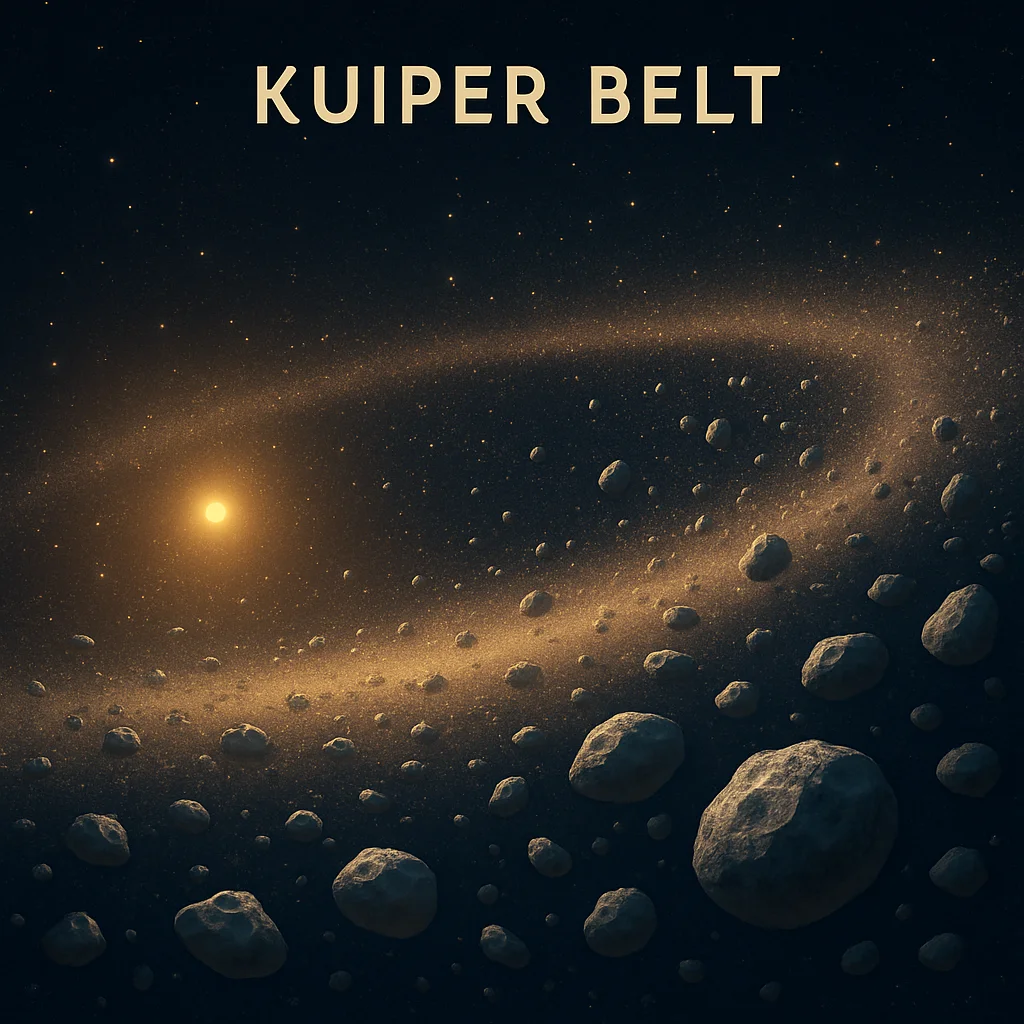
Formation and Origins
The Kuiper Belt formed approximately 4.5 billion years ago. It was during the early stages of the solar system’s evolution. This period was marked by the coalescence of planets and other celestial bodies. Initially, the belt emerged from the protoplanetary disk. This disk was a swirling cloud of gas and dust. That cloud was leftover from the Sun’s formation. It extended into the cold, outer regions of the solar system. Over millions of years, these materials began to clump together. They formed icy bodies due to the frigid temperatures beyond Neptune. There, the Sun’s heat is minimal. For instance, the region’s location allowed volatile ices to solidify. These include water, methane, and ammonia. This process was impossible in the warmer inner solar system. There, rocky planets like Earth formed.
Additionally, gravitational influences from the giant planet Neptune played a crucial role. These forces shaped the Kuiper Belt. They scattered some objects into wider, more elliptical orbits. Those forces also stabilized others in more circular paths. The belt, consequently, became a reservoir of primordial material. It preserves a snapshot of the solar system’s infancy. Scientists can study this today. Meanwhile, some theories suggest that the Kuiper Belt was once far more massive. It potentially contained hundreds of times more material. But many objects were ejected into the Oort Cloud or beyond. This was due to gravitational interactions with Jupiter and other giant planets. Furthermore, the formation of the Kuiper Belt mirrors processes observed in debris disks. These are seen around other stars. This suggests that such regions are common in planetary systems. Therefore, studying the Kuiper Belt provides a unique window. It shows the early dynamics of our cosmic neighborhood. It also reveals the processes that govern planetary formation across the universe.
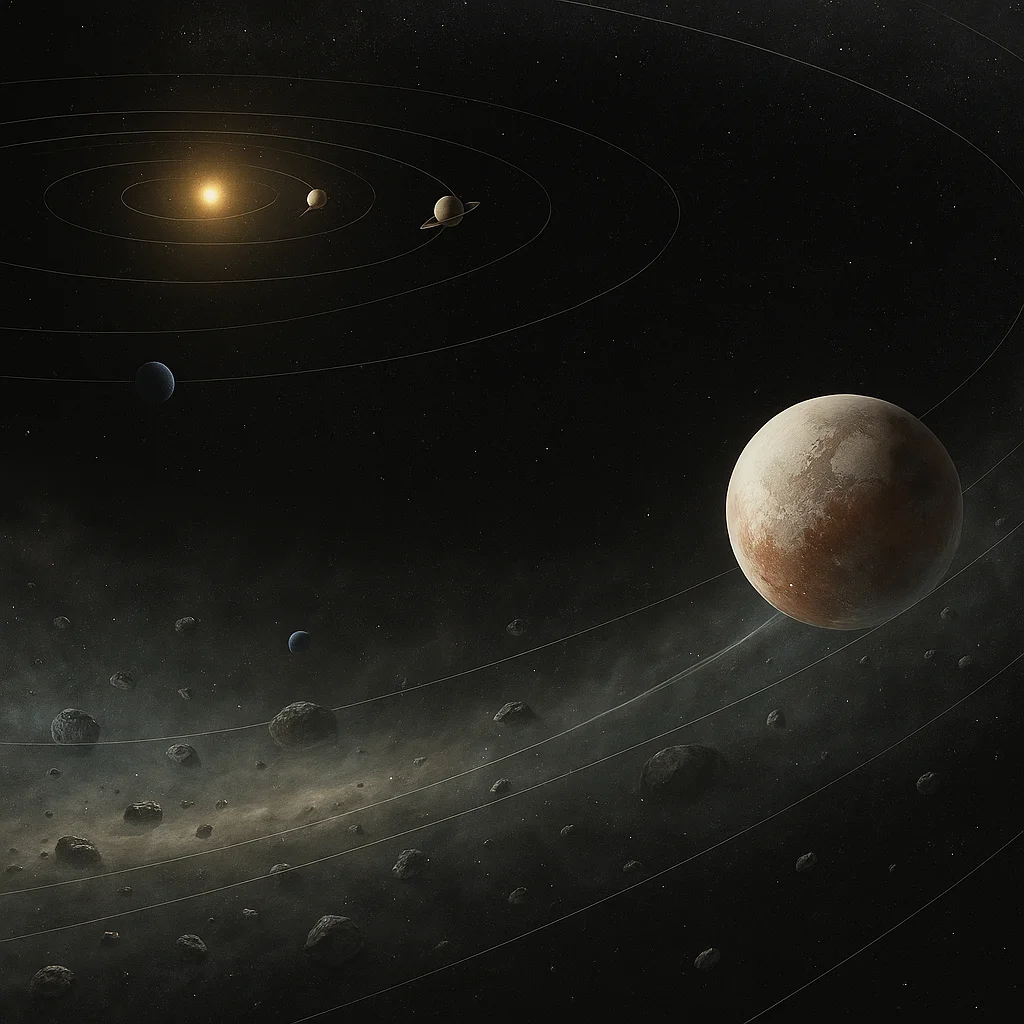
Composition and Structure
The Kuiper Belt is a doughnut-shaped region composed primarily of icy bodies. These bodies are collectively known as trans-Neptunian objects (TNOs). They vary widely in size and composition. For example, such objects are predominantly made of water ice, methane, and ammonia. They also contain rocky material. Some exhibit reddish hues due to organic compounds called tholins. These form when ultraviolet light or cosmic rays interact with methane. Moreover, the belt’s structure is divided into two main zones. These are the classical Kuiper Belt and the scattered disk. The classical belt has relatively stable, circular orbits. The scattered disk contains objects with more eccentric and inclined orbits. The classical belt, in fact, spans from 42 to 48 AU. It includes objects with low orbital inclinations. This indicates a relatively undisturbed population.
In contrast, the scattered disk extends beyond 50 AU. It has objects that have been perturbed by Neptune’s gravity. Such orbits become highly elliptical as a result. They can take them far from the Sun. Additionally, the Kuiper Belt’s total mass is relatively low. It is estimated at 0.01 to 0.1 Earth masses. This is a consequence of gravitational disruptions over billions of years. These ejected much of its original material. Smaller objects within the belt range in size. They go from a few meters to hundreds of kilometers. This creates a sparse but expansive region. Despite its low density, the Kuiper Belt spans billions of kilometers in width. It makes it a significant feature of the outer solar system. Some TNOs even show signs of geological activity. This includes cryovolcanism, where icy materials erupt from their interiors. As a result, the Kuiper Belt’s composition and structure reveal diversity. It shows icy worlds that populate the solar system’s outer reaches. It offers a glimpse into its formative years.
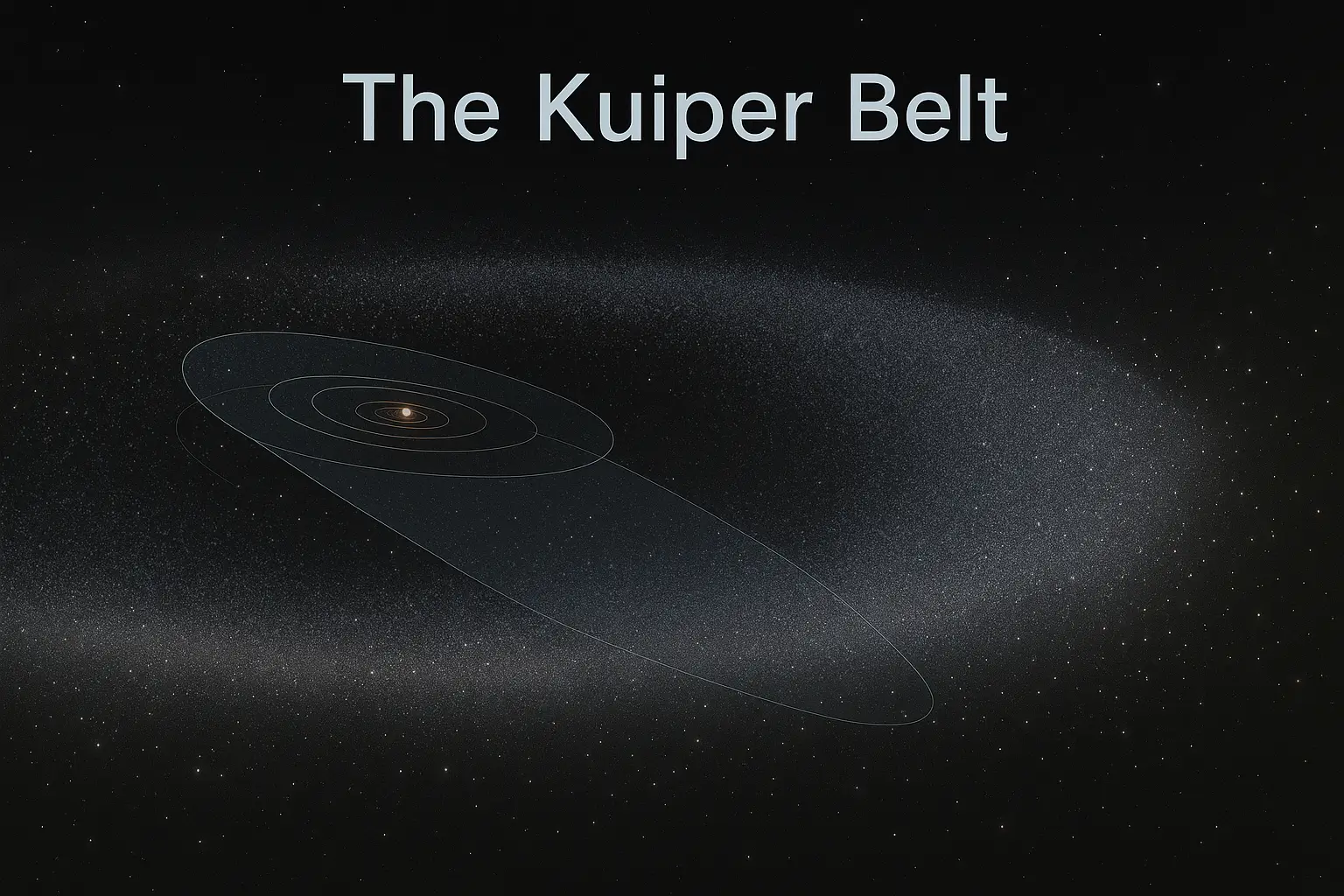
Notable Objects
The Kuiper Belt is home to several notable objects. These include dwarf planets and other large TNOs. They provide critical insights into the region’s nature and history. For instance, Pluto has a diameter of 2,377 kilometers (1,477 miles). It is the largest known Kuiper Belt object. It was reclassified as a dwarf planet in 2006 after decades of debate. Pluto’s surface features a mix of icy plains and rugged mountains. It also has a thin atmosphere. This makes it a complex world despite its small size. Eris, discovered in 2005, is another significant body. It measures 2,326 kilometers (1,445 miles) in diameter. It is slightly smaller than Pluto but more massive due to its higher density. Thus, Eris’s discovery was a pivotal moment. It prompted the International Astronomical Union to redefine the criteria. This was for what constitutes a planet.
Additionally, Haumea is known for its unusual elongated shape. This object has a rapid rotation, completing a spin in just 4 hours. Haumea spans about 2,000 kilometers (1,243 miles). It also has two small moons, adding to its intrigue. Makemake, another dwarf planet, is a bright object. It has a diameter of 1,430 kilometers (888 miles). Its surface is covered in methane ice. This gives it a reflective quality. Smaller TNOs, like 2014 MU69 (nicknamed Ultima Thule), were visited by New Horizons in 2019. They reveal a “contact binary” shape. This was formed by two objects that gently merged billions of years ago. It has a total length of 33 kilometers (21 miles). Moreover, many of these objects exhibit reddish surfaces. This is due to tholins, organic compounds. They are formed by solar radiation interacting with methane over eons. Some TNOs even show evidence of past geological activity. This includes cryovolcanism or tectonic shifts. This suggests that even small bodies in the Kuiper Belt can be dynamic. Hence, the Kuiper Belt’s notable objects highlight its role. It is a diverse repository of icy bodies. Each contributes to our understanding of the solar system’s outer frontier.
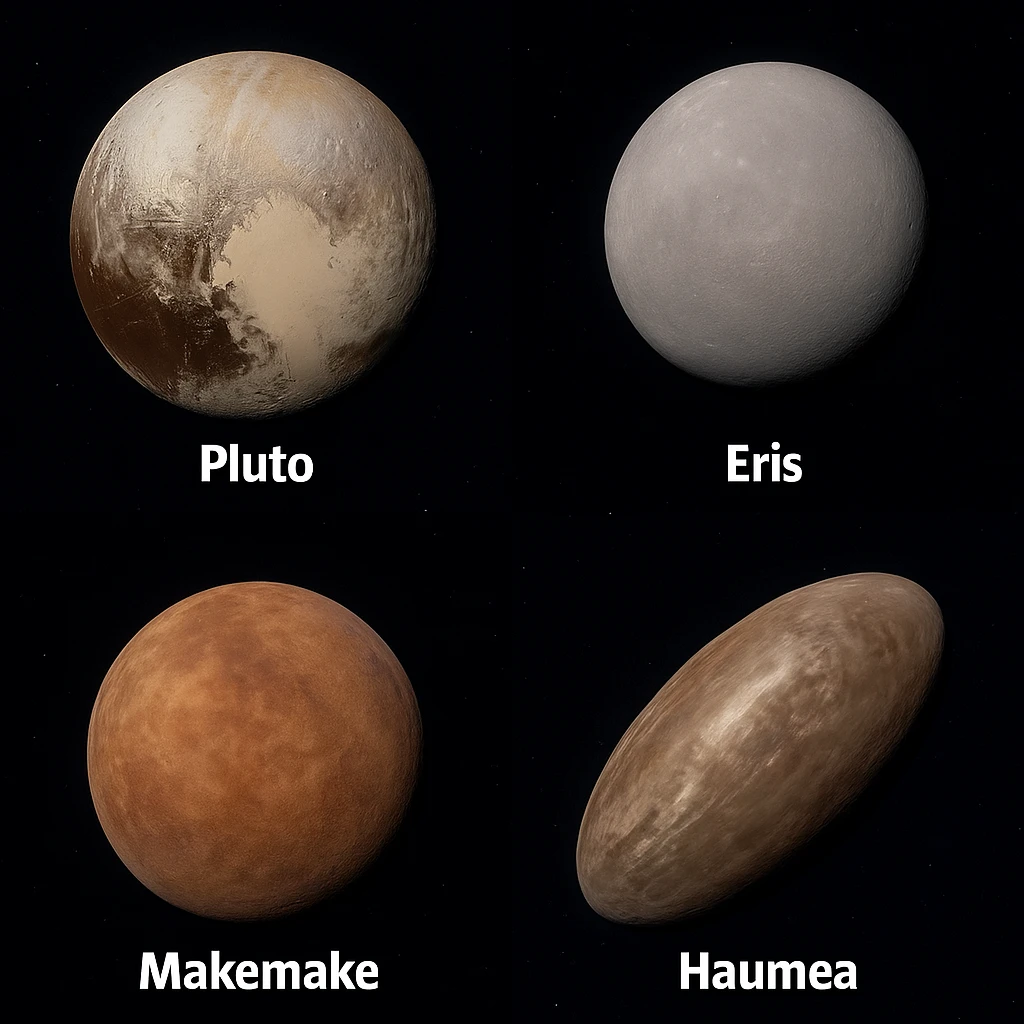
Exploration and Discoveries
The Kuiper Belt has been studied through a combination of indirect observations. These use telescopes and direct exploration via spacecraft. Its vast distance poses significant challenges. Specifically, the New Horizons mission was launched by NASA in 2006. It became the first spacecraft to explore the Kuiper Belt up close. It conducted a historic flyby of Pluto in July 2015. For example, New Horizons revealed Pluto’s stunning surface features. These include the heart-shaped Tombaugh Regio. It also showed a thin atmosphere that undergoes seasonal changes. The spacecraft then continued its journey. It visited 2014 MU69 (Ultima Thule) on January 1, 2019. This 33-kilometer-long object provided a pristine look at a primordial TNO. It had a reddish hue due to organic compounds. Additionally, ground-based telescopes have been instrumental. The Hubble Space Telescope is one example. It has identified thousands of TNOs since the 1990s. This helps astronomers map the Kuiper Belt’s extent and population.
The James Webb Space Telescope (JWST) became operational by 2025. It has further advanced our understanding. It studies the Kuiper Belt in infrared wavelengths. This allows for detailed analysis of surface chemistry. It, for instance, detected methane, ammonia, and organic compounds. These were on objects like Eris and Makemake. This offers clues about their origins and evolution. However, the region’s immense distance is beyond 30 AU. This makes detailed exploration costly and time-intensive. It requires spacecraft to travel for decades to reach their targets. Future missions could provide more comprehensive data. A proposed Kuiper Belt orbiter in the 2040s is one example. It could reveal new classes of objects. It might even show signs of subsurface oceans on larger TNOs. Moreover, the data from New Horizons and JWST has shown new insights. The Kuiper Belt is more dynamic than previously thought. Its objects exhibit diverse compositions and geological features. As a result, each discovery in the Kuiper Belt deepens our understanding. It reveals the solar system’s outer reaches and its formation history. This paves the way for future exploration.
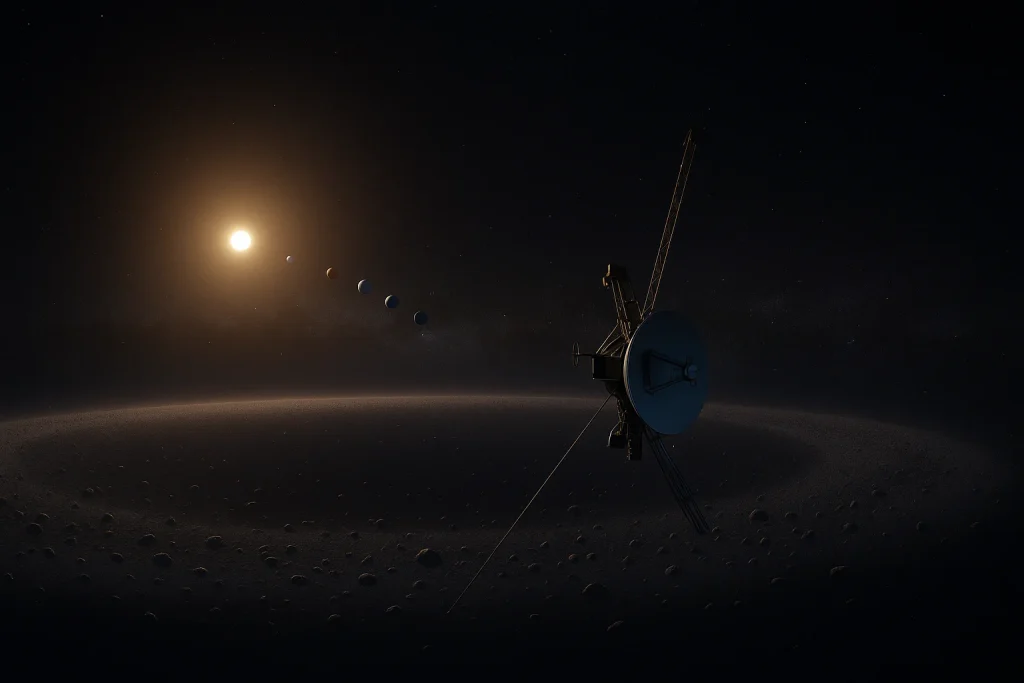
Leave a Reply